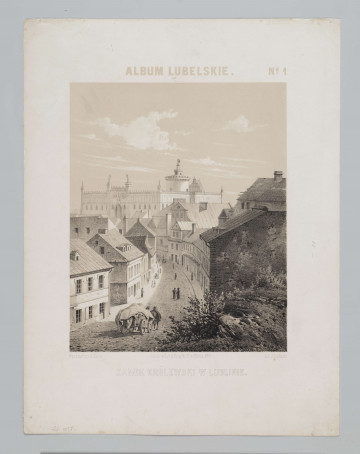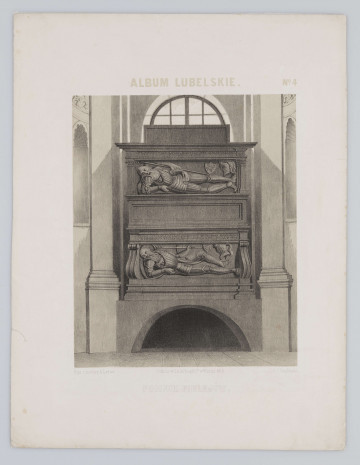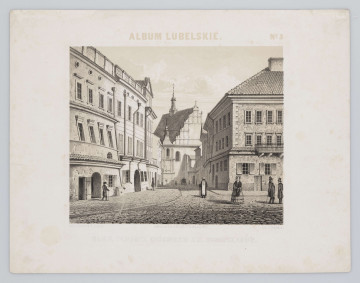
Royal Castle in Lublin
1857
National Museum in Lublin
Part of the collection: Lubliniana. Painting views of Lublin and the Lublin Region
The Gothic castle chapel, formerly the church of Holy Trinity, is the most valuable monument of Lublin. The castle church on the Castle Hill, mentioned in 1327, already existed in the 13th century. The present one was erected at the initiative of King Casimir the Great together with a brick castle in the 2nd or 3rd quarter of the 14th century. It is a two-story building with small interiors. The interior of the upper storey, with a square nave and a central pillar supporting the cross-ribbed vault, is covered with Byzantine-Ruthenian frescos founded by Władysław Jagiełło at the beginning of the 15th century. Until the end of the 16th century, the church, richly fitted out, was one of the most important churches in Lublin and a favourite place of prayer of the monarchs. The presence of kings and their families staying in the castle, especially from the Jagiellonian dynasty, increased the splendour of the rituals. It was here, on June 29th, 1569, after many months of deliberations concerning the conclusion of a political union between Lithuania and Poland, held mainly in the Lublin castle, that Sigismund Augustus participated in the mass after which Te Deum laudamus was sung. In the castle temple, on the day of the Holy Trinity, famous indulgences were held. The believers from Lublin and the surrounding area who had gathered in other Lublin churches the day before, went there in processions for the all-day service. At that time, crowds of several thousand people occupied the entire castle hill, the area at the foot of the hill as well as the adjacent streets. In the years 1824-1826, the church was connected with the building of the then-constructed criminal prison. From then on, it served as a prison chapel. The interior also took on an ascetic character. The paintings were covered with plaster. The pulpit and most of the pews as well as the four valuable gothic plank paintings were removed. Three later altars, a pair of benches, a confessional and an old, Jagiellonian wooden choir with the remains of sculptures, traces of painting and gilding, and an oak entrance door with carved shields depicting an eagle and a double cross were left. In the previously beautiful interior there was a ‘truly prison silence, interrupted only on Sundays and holidays by reading the Holy Mass, proclaiming the word of God by the priest, and whispers of the prayers of the present inhabitants of the castle’. With the shutting down of the prison in 1954 and the creation of a museum in its building in 1957, the chapel became an integral part of the new institution.
Renata Bartnik
Author / creator
Dimensions
cały obiekt: height: 16,3 cm, width: 22,1 cm
Object type
graphics
Technique
lithography
Material
paper
Creation time / dating
Creation / finding place
Owner
The National Museum in Lublin
Identification number
Location / status

1857
National Museum in Lublin

1857
National Museum in Lublin

1857
National Museum in Lublin
DISCOVER this TOPIC
National Museum in Lublin
DISCOVER this PATH
Educational path